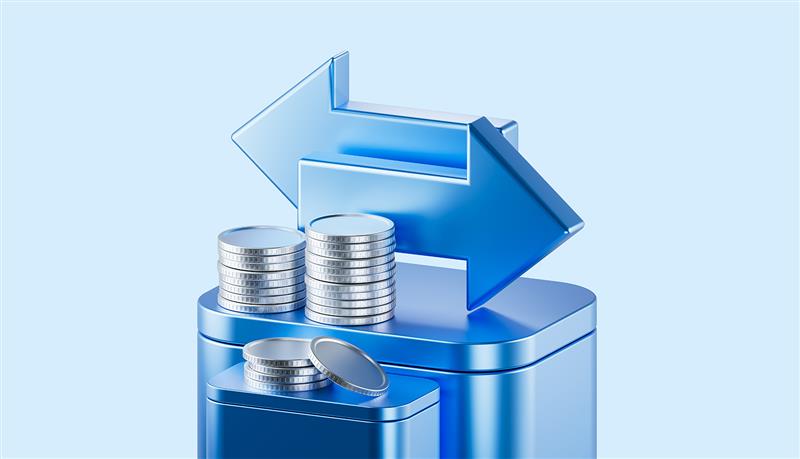
Events on the political and economic scene in Romania, especially over the last year, have shown that macroeconomic indicators can change and capital flows are influenced by what happens in a country's economy.
Today we take a look at the currencies, currency pairs and key factors influencing the exchange rate in Romania.
As you know, currency is an officially recognized means of payment in a country, used for commercial and financial transactions, and the exchange rate is the price of one currency expressed in another currency. The place where currencies are exchanged is called a foreign exchange market.
How does currency appreciation versus depreciation work?
Leu appreciation: means the leu is worth more against the euro or dollar.
The depreciation of the leu has the opposite effect, i.e. the euro or the dollar will become stronger than the leu.
These fluctuations can influence (directly and indirectly) the size of your spending in Romania or your purchasing behavior.
Why is the course moving?
Forex (Foreign Exchange Market), the world's largest financial market where currencies are traded, records daily transactions of over 7 trillion dollars. These daily transactions are influenced by a combination of factors, which will determine a certain exchange rate. For Romania, they would work like this:
- Reference interest rate: if it is high, in theory, it attracts investment in Romania in local currency and thus strengthens the leu, if it is low, the leu may depreciate.
- Inflation - if low, the leu can appreciate.
- Current account deficit - a large deficit can lead to a depreciation of the leu.
- The state of the economy - If the economy is strong and growing, this attracts foreign investors, which can lead to an appreciation of the local currency.
- Fiscal and monetary policies - Government and National Bank of Romania (NBR) decisions can influence investor perception and behavior. If foreign investors' money flows into the country, the leu appreciates and becomes stronger.
- Speculation - Investor expectations and behavior can cause sudden moves. Take the 2015 Swiss franc crisis.
What's happening with the leu in Romania?
Romania has a managed floating regime, which means that the NBR occasionally intervenes to stabilize the exchange rate. The leu (RON) trades mainly against the euro (EUR/RON) and the dollar (USD/RON).
Over the past three and a half years, the EUR/RON exchange rate has been stable at around 4.95 RON/EUR - a sign of confidence due to the economy, NBR interventions, prudent fiscal policies and EU funds.
However, in recent months, the exchange rate of the Romanian Leu (RON) has been more volatile than usual, influenced by domestic political and economic factors:
- On May 7, 2025, the official NBR exchange rate reached a new record of 5.0991 lei/euro, exceeding for the first time the psychological threshold of 5 lei.
- Post-electoral depreciation: After the first round of the presidential elections, the leu reached 5.1222 RON/EUR, a depreciation of about 2%.
- Interventions by the NBR: The National Bank of Romania intervened significantly on the foreign exchange market to stabilize the leu, with almost €6.8 billion for this purpose.
Exchange rates in the region
Evolution 2022 - 2025

- The Leu (RON) is a regional exception in terms of stability, with a slight depreciation at the end of the range. Against the other currencies in the region it has very low volatility.
- The Czech koruna (CZK) has been resilient and stable, thanks to the Czech Republic's strong economy, political and fiscal stability.
- The Hungarian Forint (HUF) was the most volatile and vulnerable. It is heavily affected by political instability, weak monetary policies and Hungary's political conflict with the EU.
- The Polish Zloty (PLN) performed relatively well with moderate volatility. Poland is supported by good economic fundamentals, relatively prudent fiscal policies and solid and sustainable economic growth.
What is a stable leu?
- Less risky transition: a more stable leu means predictability for those sending money to Romania or investing.
- Balanced monetary policy: with the benchmark interest rate at 6.5% (above inflation of 5.7%), the NBR is tempering inflationary pressures.
- Easier planning: inflation is kept in check and the predictable exchange rate means you can focus on what's important to you if you're thinking of moving back to Romania. Whether it's buying a house or finding a job, you don't have to worry about sudden exchange rate changes.
- Macroeconomic stability: the NBR intervenes when needed to correct imbalances or high volatility.
A stable exchange rate is not an accident, but the result of a well-calibrated strategy. In a financial world of volatile currencies and unpredictable decisions, the leu remains one of the most "well-behaved" currencies in the region.
If you're planning to return to Romania, this may be a good time: the leu is relatively stable, the NBR is acting for balance, and Romania has a mix of predictability and long-term growth potential. It remains, however, to follow together the packages of measures that will be implemented for Romania's economic recovery.


